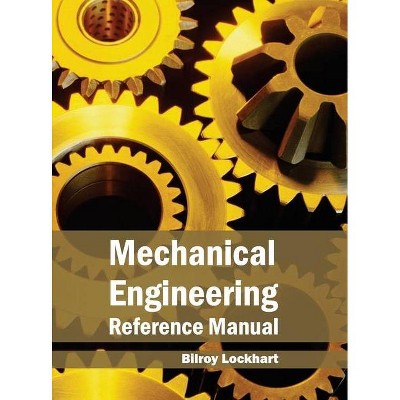Mechanical Engineering for Makers - by Brian Bunnell & Samer Najia (Paperback)

Similar Products
Products of same category from the store
AllProduct info
<p/><br></br><p><b> About the Book </b></p></br></br>"A hands-on guide to designing and making physical things"--Front cover.<p/><br></br><p><b> Book Synopsis </b></p></br></br><p>This practical, user-friendly reference book of common mechanical engineering concepts is geared toward makers who don't have (or want) an engineering degree but need to know the essentials of basic mechanical elements to successfully accomplish their personal projects. The book provides practical mechanical engineering information (supplemented with the applicable math, science, physics, and engineering theory) without being boring like a typical textbook. Most chapters contain at least one hands-on, fully illustrated, step-by-step project to demonstrate the topic being discussed and requires only common, inexpensive, easily sourced materials and tools. Some projects also provide alternative materials and tools and processes to align with the reader's individual preferences, skills, tools, and materials-at-hand. Linked together via the authors' overarching project -- building a kid-sized tank -- the chapters describe the thinking behind each mechanism and then expands the discussions to similar mechanical concepts in other applications. Written with humor, a bit of irreverence, and entertaining personal insights and first-hand experiences, the book presents complex concepts in an uncomplicated way.<br/><br/>Highlights include: <br/><br/></p><li>Provides mechanical engineering information that includes math, science, physics and engineering theory without being a textbook</li><li>Contains hands-on projects in each chapter that require common, inexpensive, easily sourced materials and tools</li><li>All hands-on projects are fully illustrated with step-by-step instructions</li><li>Some hands-on projects provide alternative materials and tools/processes to align with the reader's individual preferences, skills, tools and materials-at-hand</li><li>Includes real-world insights from the authors like tips and tricks (Staying on Track) and fail moments (Lost Track!)</li><li>Many chapters contain a section (Tracking Further) that dives deeper into the chapter subject, for those readers that are interested in more details of the topic</li><li>Builds on two related Make: projects to link and illustrate all the chapter topics and bring individual concepts together into one system</li><li>Furnishes an accompanying website that offers further information, illustrations, projects, discussion boards, videos, animations, patterns, drawings, etc.<br/><br/>Learn to effectively use professional mechanical engineering principles in your projects, without having to graduate from engineering school!</li><p/><br></br><p><b> About the Author </b></p></br></br><p>Brian Bunnell is a mechanical engineer by education but a tinkerer at heart. He earned his Engineering Degree from Clemson University in 2000 and has been working in mechanical design ever since. Brian began tinkering early on (creating crazy projects with his Dad), and Making quickly became his lifelong passion.</p><p>Samer Najia holds a degree in Mechanical Engineering from Duke University and an MBA from American University, but he is a passionate serial Maker, particularly of things that move and especially of things that fly. Samer started building at age six and never stopped. His projects just seem to get bigger over time.</p>
Price History
Price Archive shows prices from various stores, lets you see history and find the cheapest. There is no actual sale on the website. For all support, inquiry and suggestion messagescommunication@pricearchive.us




















